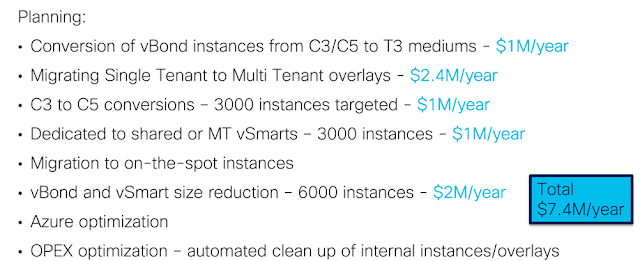Is allocating budget and verifying spending a little more difficult than they had told you?
You’ll probably find some best practices and tools for cost control in public cloud services, described in this series of two posts, useful to improve the efficiency of your consumption. They apply to every IaaS and PaaS service in a multicloud context.
What CxO expect from IT
Surveys show that the enterprise IT is getting a predominant role in front of the lines of business when they need cloud services. Not just to select the best solution for them, but to help keeping the financial aspects in control (source: RightScale State of the Cloud Report).
 |
| role of enterprise IT in cloud decisions |
Looking at the initiatives, that is where budget is allocated, cost control and cost saving is on top:
 |
| Allocation of budget for cloud initiatives |
Like drug dealers
Cloud providers are making a lot of money. And, of course, they want more customers and they want to retain the existing ones. Competitors steal some, and others just fly away when they realize that operating applications in production is more expensive than they had thought.
So, they offer you some candies, just to taste what a beautiful trip they can offer you. Even with a free account, you get amazing services that work very well. See also Azure and Google. They all make building business applications quick and easy.
 |
| appealing services offered by AWS |
Developers are attracted by that, and they love creating cloud native applications using PaaS services. But they do not realize, or they just don’t care of, how expensive it will be to run applications in production.
In addition, they generate a lock-in because PaaS services are not portable across clouds.
Is public cloud easier or is it cheaper?
Now ask yourself this question: do you use the public cloud because it’s easier or because it’s cheaper? Or maybe you’re just lazy and you want to delegate the SLA responsibility to the service provider?
I will not discuss if it’s easier in this post. But, for sure, it’s not cheaper. Budgets go out of control very often.
Those are some tips from Amazon (source: AWS re:Invent2019)
 |
| tips for saving from AWS |
Of course, cloud providers want to help you to be efficient but… not too much! The two green actions look like the most effective, now let’s see if we can do anything better.
Cost control framework
We could create a cost control framework, as the large company I took this information from.
 |
| cost saving framework |
We focus mostly on two aspects: avoidance of unnecessary costs and iteration of the improvement actions.
In the avoidance best practice, we concentrate on the efficiency of VM snapshots retention: how many and how long. Storage volumes and public ip addresses should be monitored, because they generate a cost. When you use a S3 storage you can optimize the cost based on frequency of access, speed and size. And VM should not be larger than need, because you pay also the capacity in excess. Suspending VM at night, in the weekend or whenever the business application is not used, also saves money. And so does scaling capacity dynamically
You should monitor the situation carefully, and automation helps here. You can setup alerts and governance policies, having reports sent to the stakeholders. Automation in provisioning, but mostly in reporting and resource adjustment is key.
You can obtain important savings
This is what cost optimization saved in the context of a large SaaS service operations. Most of the saving comes from adoption of reserved instances where appropriate and from cleaning environments used for proof of concepts. The total saving is $7M per year.
 |
| savings from cloud optimization |
And this is what they are planning: choosing the right instance types, rightsizing, cleaning up will save $7M more per year.
 |
| expected savings from recurring optimization |
Cost control: a solution
We will examine a simple 3 steps process to save your budget.
- Understand your assets and ecosystem
- Optimize based on best practices, on investigation through your assets or... recommendations from a tool
- Avoid unnecessary costs and iterate of the improvement actions
Easy principles to set a governance model are:
- Define (and enforce) budgets for your customers, projects and departments.
- Monitor and report about that.
- Set policies to automate suspension, autoscaling and cleanup.
Cisco offers a solution that helps you to achieve all that, quick and easy.
We have built a framework that is based on the feedback loop suggested by best practices (e.g. the second principle of DevOps recommends looking at the entire system as a whole and iterating the optimization).
 |
| the optimization loop |
In next post you will find a solution for implementing your cost control quickly and consistently across all the clouds you use: any combination of private cloud technologies and public clouds, with no need to adopt specific solutions for each individual target.
Keep reading, it will prove useful for your strategy.
No comments:
Post a Comment
Note: Only a member of this blog may post a comment.